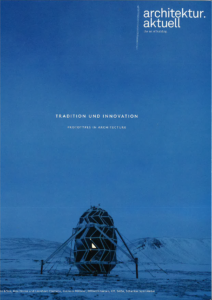FCL Magazine launched with issue on Technology
On September 6th 2013, the editors Dirk E. Hebel and Stephen Cairns launched the new FCL Magazine with its first issue ‘Technology’.
The FCL Magazine is a periodical about research. It does not aim to present unquestionable research results, nor fully worked out ‘solutions’ to the myriad dilemmas that contemporary and future cities unfold. Rather, it aims to show things which are not yet fully resolved, work in progress, approaches to longer term issues. In so doing, the magazine will embrace mistakes and failures. It will celebrate questions, highlight methodologies, and revel in the shaping of research.
FCL Magazine is time limited. It will only be alive, as long as the Future Cities Laboratory is active. It draws its content and energy from the researchers inside FCL. It has a dual audience: those researchers within FCL, for whom the magazine is intended as a provocation for discussion and prompt for critical reflection on interdisciplinary approaches to the city; and colleagues who work in related fields, for whom the magazine is intended as a source of information on the work being conducted at FCL, and as an invitation to engage.
The first issue of the FCL Magazine aims to address the role of technology in FCL’s research activities. The word technology is derived from the Greek words techné, meaning art or craft, and logos, meaning word, intellectual capability, doctrine, rational or even reflection. Technology therefore suggests a mentality of “thinking” on what we are “doing”. For a laboratory setting, this seems to be an ideal point of departure and is more open than simplified definitions such as technique or machine.
Over the past two and a half years various ways of using technology in FCL’s daily work have emerged in our research community. While some claim, that architects in general show a fear of implementing technology in their designs, others try to define the term in an alternative approach by developing links between local traditions and state of the art technologies. Others are impatient to see new developments in the technological sector and claim that information technology is printing technology. Robotic drones create artificial three-dimensional maps of our immediate environment and reduce it to a thin layer of data carpets and point clouds. Technology is conventionally described in low– tech and high-tech variants. This first issue of FCL Magazine offers a platform for divergent definitions of technology, and offers suggestions, clues, and approaches on how to operate on a shifting. It gives a selected overview, no more and no less.






























